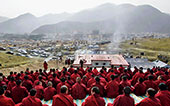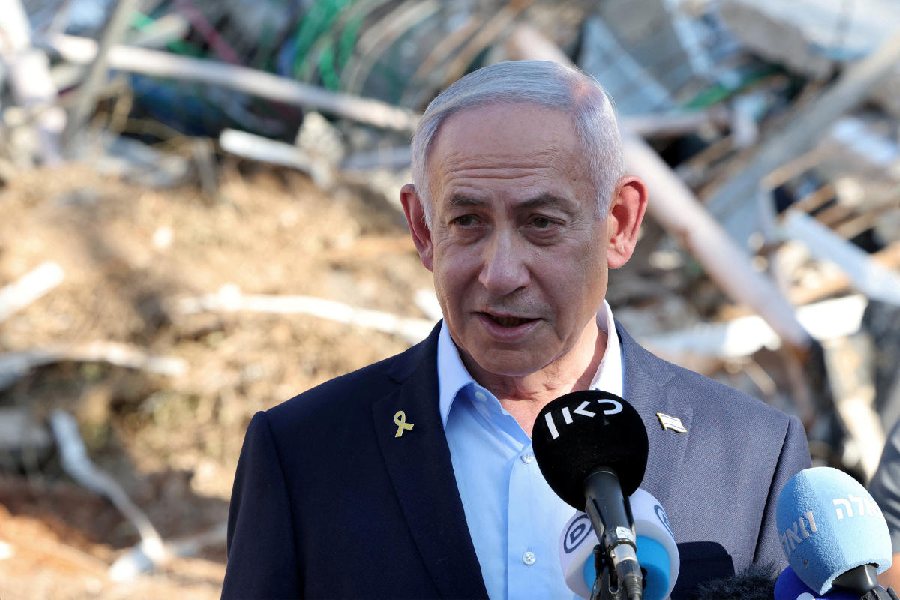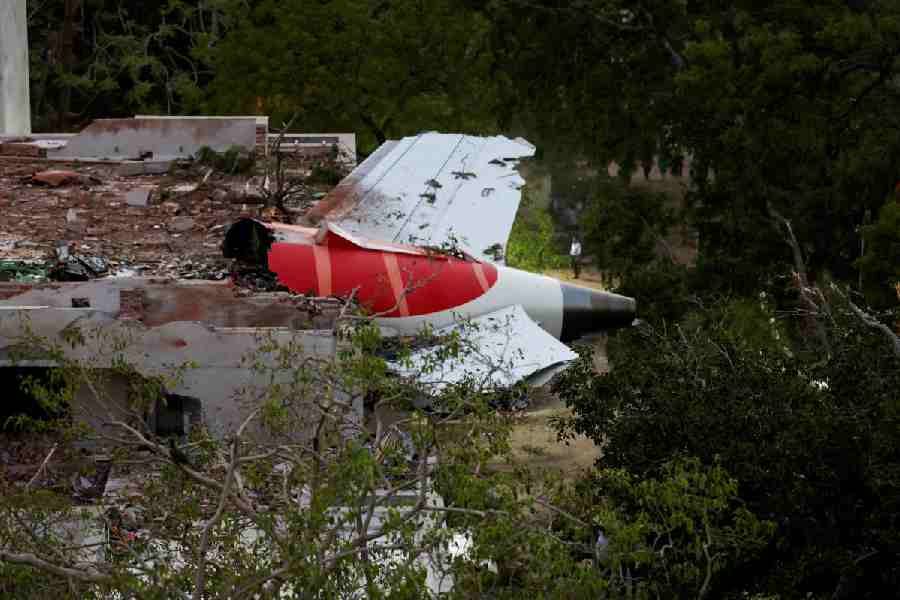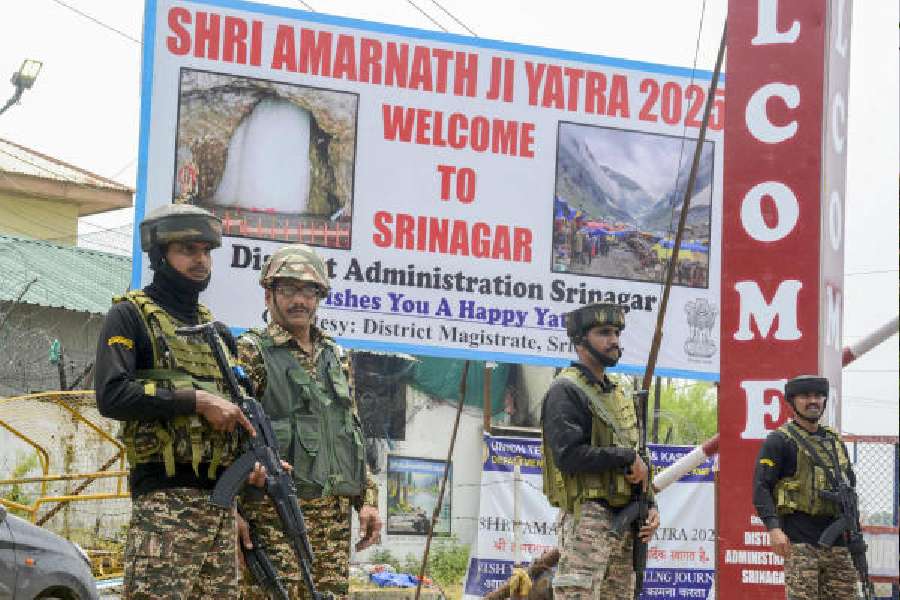 |
The now happily ended “localised problem” (Manmohan Singh’s words) in Ladakh confirmed that two perceptions — mirror images of each other — are at war between India and China. Each sees the other as a hegemon, potential if not actual, bent on encircling it. Geography makes Tibet their battlefield. For the Chinese, Tibet is the soft underbelly that provides a vital link with restive Xinjiang. For Indians, it’s less a reservoir of Buddhist thought and culture than a ‘card’ New Delhi hasn’t played with sufficient finesse.
P.V. Narasimha Rao was outraged by my suggestion that we were not doing enough for Tibet. “What do you mean?” he snapped. “No other country would have given the Dalai Lama and 100,000 Tibetans asylum!” He went on to describe what was already known — that Western governments profess sympathy for Tibet only when it suits them to rile the Chinese. Now India has an opportunity of turning the hospitality in which Narasimha Rao took just pride into realpolitik to compensate for past vacillation. Salman Kurshid’s two days in Beijing, the expected visit this month of China’s premier, Li Keqiang, and Manmohan Singh’s plans to go to China in the next few months provide a setting for vigorous new initiatives that continue the boldness India reportedly demonstrated during the recent border flag meetings, but to serve a wider, longer-term objective.
The Dalai Lama’s measured utterances never go beyond the options for China and Tibet; he is careful not to suggest any course of action for India. But one of his senior officials made some interesting points at a conference on Tibet that the Foundation for Non-Violent Alternatives recently hosted in Gangtok in collaboration with Sikkim University. Four of the five points highlighted by Thubten Samphel, director of the Tibet Policy Institute in Dharamsala who has visited Tibet as part of a fact-finding mission from the Central Tibetan Administration, could help to convert Tibet from a bone of contention into an area of constructive cooperation between the two Asian giants. Directly addressing the FNVA’s mandate “to promot(e) better understanding of regional dynamics … with emphasis on the rising power of India and China” and to promot(e) “dialogue between the peoples of India, Tibet and China”, Thubten indicated how India could improve its leverage with China without stooping to the provocative banality of what is called ‘playing the Tibet card’.
I said four of Thubten’s five points because the first — that three separate United Nations resolutions in 1959, 1961 and 1965 make Tibet an international issue — can evoke uncomfortable comparison with Jammu and Kashmir. Nevertheless, it’s in China’s interest to resume the negotiations with the Dalai Lama that were suspended in January 2010. If the pontiff is unacceptable as a “splittist”, talks can be with the Dharamsala administration, though Thubten didn’t say so. Instead, he cited the attendance of more than a thousand mainland Chinese at the Dalai Lama’s teachings at Bodh Gaya to argue that public opinion in China is changing, even if authority remains rigid. The respect shown to even ordinary monks in public places like restaurants in Beijing and Shanghai certainly doesn’t indicate anti-religious feeling. Thubten might also have mentioned the many other mainland Chinese who visit the young Karmapa Lama, head of Buddhism’s Karma Kagyu sect which is the world’s oldest unbroken line of succession through reincarnation. They accounted for some of the perfectly normal cash donations that caused such uproar not long ago.
Thubten’s second point follows from this religious link. “Buddhism is India’s greatest soft power and (India) should not allow others to hijack this for their political objectives.” Theiji Sampho, who led the Tibetan delegation to the 1947 Asian Relations Conference, similarly called India “the motherland of Buddhism”. So, ironically, did a Chinese diplomat whom I asked why Beijing wanted Arunachal Pradesh. “It’s very important to us,” he exclaimed, astonished I should even ask. “The sixth Dalai Lama was born there!” Presumably, Thubten wasn’t only indulging in wishful thinking in asserting that conversations with the Chinese about Buddhism and about Tibet’s “middle way approach” guarantee that Beijing will be more positive in future if the Chinese public is allowed “a say in shaping policy”.
The first of his three other suggestions advised India to persist with efforts to reopen its Lhasa consulate. History and culture make this a logical step, especially since China’s provinces enjoy some foreign policy powers. India must, of course, first convince the Chinese that far from encouraging “splittists”, the consulate will care for pilgrims in both directions (Mount Kailash as well as Sarnath, Nalanda, Rajgir, Bodh Gaya and other sacred Buddhist sites) and help to expand India’s trade, tourism and cultural ties with the Tibet Autonomous Region. Since Tibet’s waterways provide food and irrigation for about 47 per cent of humanity, India and Bangladesh should set up a Brahmaputra river commission with the “sole aim” of ensuring that the Yarlung Tsangpo does not deplete the flow downstream. Finally, he wants far more in-depth research on Tibet not only by the exiled community but also under Indian government auspices so that there are “multiple sources of information, knowledge and perspectives on China’s activities and intentions on the Tibetan plateau”. The aim would be to ensure that development activities on the roof of the world are not detrimental to neighbouring countries.
Thubten received strong support from another Tibetan, Tenzin Norbu, who heads the CTA’s environment and development desk. His long and learned paper invoked scientific data to argue that the survival of 1.2 billion people depends on the water resources of the Tibetan plateau and demands “long-term planning for the time when the current enhanced flows due to glacier melt will greatly diminish, once the un-recharged glaciers are exhausted”. Given the warm tribute Shyam Saran, the national security adviser, has paid elsewhere to Chinese support for India’s stand on issues like climate change, global warming and international trade, Sino-Indian-Bangladeshi cooperation on husbanding Tibet’s water resources may not be too far-fetched.
None of these recommendations is definitive. A new regime has taken over in Beijing. The Chinese are involved in territorial and maritime disputes with Japan, Taiwan, the Philippines and Vietnam. They are also engaged in acrimonious arguments with the Americans. China knows that while India cannot match their country’s economic strength or ability to project power, it could be a formidable adversary in the company of Japan, the United States of America and the Association of South-East Asian Nations. Moreover, China’s development needs the raw materials that make for a $23-billion deficit in a $66-billion trade expected to go up to $100 billion. Taking everything into account, a bold stand by India might persuade the Chinese that there is more to bilateral diplomacy than squabbling over remote border regions.
A positive outcome calls for a change of thinking in New Delhi too. The government’s present stance recalls a description of a party in the twilight years of Bahadur Shah’s titular reign where a group of gaudily bedecked Mughal princes stood aloof, ready to bow and salaam ingratiatingly and obsequiously if any British guest deigned to notice them, but otherwise the picture of arrogant hauteur. Leaks about what Xi Jinping may or may not have whispered to Manmohan Singh in Durban and ecstasy because Li Keqiang apparently insisted on visiting India first only expose South Block’s immaturity.
This legacy of 1962 is reinforced by the conviction that the Han race feels it is superior to the rest of mankind and that its special contempt is reserved for India. The former proposition is too big for discussion here, but as the Beijing-based sinologist, Lora Saalman, told a small Calcutta audience recently, the Chinese wouldn’t have kept such close watch on everything that happens in this country if they did not take India seriously. India must convince them it is serious about Tibet.










